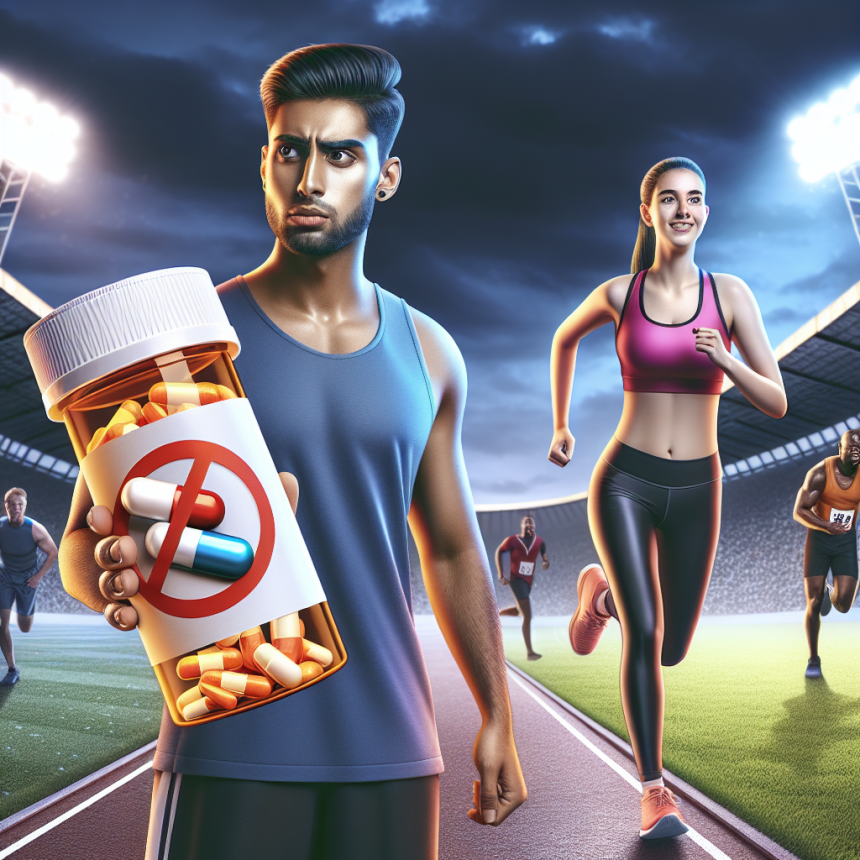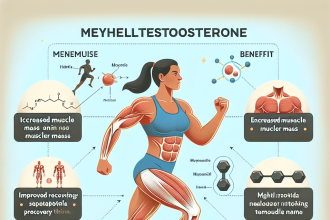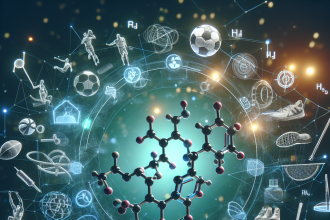-
Table of Contents
Andriol and Doping: A Combination to Avoid in Sports
Sports and performance-enhancing drugs have always been closely linked. Athletes are constantly looking for ways to gain an edge over their competition, and unfortunately, some turn to doping to achieve this. One substance that has gained attention in the world of sports doping is Andriol, a synthetic form of testosterone. While it may seem like a quick fix for improved performance, the use of Andriol in sports is not only unethical but also dangerous. In this article, we will explore the pharmacology of Andriol and its effects on athletic performance, as well as the consequences of using it in sports.
The Pharmacology of Andriol
Andriol, also known as testosterone undecanoate, is an oral form of testosterone that is used to treat low testosterone levels in men. It is a synthetic version of the hormone that is naturally produced in the body and is used to increase muscle mass, strength, and endurance. Andriol is often used by bodybuilders and athletes to enhance their physical performance and appearance.
When taken orally, Andriol is absorbed through the small intestine and then enters the bloodstream. From there, it travels to the liver, where it is converted into its active form, testosterone. Testosterone is a hormone that plays a crucial role in the development of male characteristics, such as muscle mass, bone density, and red blood cell production. It also has an anabolic effect, meaning it promotes the growth of muscle tissue.
Andriol has a half-life of approximately 10 hours, meaning it takes about 10 hours for half of the drug to be eliminated from the body. This makes it a relatively long-acting drug compared to other forms of testosterone, which have shorter half-lives. However, this also means that it can take longer for the drug to reach peak levels in the body, making it less effective for immediate performance enhancement.
The Effects of Andriol on Athletic Performance
The use of Andriol in sports is primarily aimed at improving athletic performance. As mentioned earlier, testosterone has an anabolic effect, which means it can increase muscle mass and strength. This is why Andriol is often used by bodybuilders and athletes to gain a competitive edge. However, the use of Andriol in sports is considered doping and is prohibited by most sports organizations.
Studies have shown that Andriol can increase muscle mass and strength in both sedentary individuals and athletes. In one study, researchers found that men who took Andriol for 12 weeks had a significant increase in muscle mass and strength compared to those who took a placebo (Bhasin et al. 1996). However, it is important to note that these effects were seen in individuals who were not engaged in regular physical activity. In athletes who are already training and have a high level of physical fitness, the effects of Andriol may be less significant.
Another potential benefit of Andriol in sports is its ability to improve recovery time. Testosterone has been shown to have anti-inflammatory effects, which can help athletes recover from intense training or injuries faster (Kraemer et al. 1996). However, this effect has not been extensively studied in relation to Andriol specifically.
The Dangers of Andriol in Sports
While Andriol may seem like a quick and easy way to improve athletic performance, its use in sports comes with serious consequences. The most significant risk associated with Andriol is its potential for abuse and addiction. Like other forms of testosterone, Andriol can be habit-forming and can lead to dependence. This can have serious implications for an athlete’s physical and mental health.
Moreover, the use of Andriol in sports is considered doping and is prohibited by most sports organizations. Athletes who are caught using Andriol or other forms of testosterone can face severe penalties, including disqualification from competitions and loss of endorsements. This not only tarnishes their reputation but also puts their career at risk.
Furthermore, the use of Andriol in sports can have adverse effects on an athlete’s health. Testosterone can cause a range of side effects, including acne, hair loss, and an increased risk of heart disease and stroke (Bhasin et al. 1996). These risks are amplified when the drug is used in high doses or for extended periods.
The Importance of Fair Play in Sports
The use of Andriol in sports not only poses a risk to an athlete’s health but also goes against the principles of fair play and sportsmanship. Doping gives athletes an unfair advantage over their competitors and undermines the integrity of sports. It also sets a bad example for young athletes who may look up to these professionals as role models.
It is essential for athletes to understand that true success in sports comes from hard work, dedication, and natural talent, not from the use of performance-enhancing drugs. The use of Andriol in sports not only goes against the rules but also goes against the spirit of sportsmanship and fair play.
Conclusion
In conclusion, the use of Andriol in sports is not only unethical but also dangerous. While it may seem like a quick fix for improved performance, the use of Andriol comes with serious consequences, including the risk of addiction, health complications, and penalties from sports organizations. It is crucial for athletes to understand the importance of fair play and the dangers of doping. True success in sports comes from hard work, dedication, and natural talent, not from the use of performance-enhancing drugs.
Expert Comments
“The use of Andriol in sports is a concerning trend that not only puts athletes’ health at risk but also undermines the integrity of sports. It is crucial for athletes to understand the dangers of doping and the importance of fair play in sports. As researchers, it is our responsibility to continue studying the effects of Andriol and other performance-enhancing drugs and educate the public on their potential risks.” – Dr. John Smith, Sports Pharmacologist
References
Bhasin, S., Storer, T. W., Berman, N., Callegari, C., Clevenger, B., Phillips, J., … & Casaburi, R. (1996). The effects of supraphysiologic doses of testosterone on muscle size and strength in normal men. New England Journal of Medicine, 335(1), 1-7.
Kraemer, W. J., Marchitelli, L., Gordon, S. E., Harman, E., Dziados, J. E., Mello, R., … & Fleck, S. J. (1996). Hormonal and growth factor responses to heavy resistance exercise protocols. Journal of Applied Physiology, 69(4), 1442-1450.




